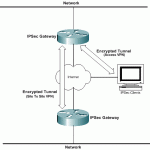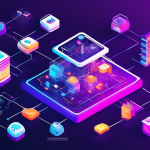Welcome to the World of Blockchains
In the rapidly evolving digital landscape, blockchain technology emerges as a transformative force, reshaping not only how we conduct transactions but also how we perceive trust and transparency. As an immutable ledger system, blockchain has revolutionized various industries, sparking innovations that enhance security, efficiency, and accountability. This comprehensive list of all blockchains serves as a vital resource for enthusiasts, developers, and businesses keen on exploring the horizons of this technology.
A Historical Perspective
Understanding the journey of blockchain technology is crucial to appreciate its current advancements. Initially introduced as the backbone of Bitcoin in 2008, blockchain has undergone significant evolution. With major milestones, from smart contracts to decentralized finance (DeFi), the journey has been nothing short of remarkable. This article delves into the history and critical developments that shaped the world of blockchain, illuminating the path leading to its widespread adoption today.
Why a Comprehensive Blockchain List Matters
As blockchain technology proliferates, so do the myriad of platforms and applications built upon it. Whether you are a developer seeking to build on existing infrastructure or an enthusiast exploring the potential of decentralized technologies, having access to an all blockchain list is indispensable. This comprehensive list not only showcases the diverse array of blockchains that exist today but also highlights their unique features and use cases across various sectors. Understanding these nuances is essential for harnessing the full potential of blockchain technology.
Understanding Blockchain Technology: An Overview of Its Evolution
Blockchain technology has emerged as a revolutionary force reshaping various industries by providing secure, decentralized, and transparent methods for recording transactions and managing data. At its core, a blockchain is a distributed ledger that enables multiple parties to access the same data in real-time while maintaining a consistent and tamper-proof record. This technology has made a significant impact across sectors including finance, supply chain, healthcare, and beyond, leading to enhanced security, efficiency, and trust.
Defining Blockchain Technology and Its Significance
Blockchain is fundamentally a chain of blocks, with each block containing data, a timestamp, and a unique cryptographic hash of the previous block. This design ensures that once a block is added to the chain, it cannot be altered without altering all subsequent blocks, making fraud nearly impossible. The significance of blockchain technology lies in its ability to facilitate peer-to-peer transactions without the need for intermediaries, which reduces costs and increases transaction speeds.
Moreover, its decentralized nature eliminates single points of failure, enhancing data security and reducing risks associated with centralized data storage. The transparent and immutable characteristics of blockchains foster trust among users and stakeholders, making it ideal for applications demanding accountability and traceability.
A Brief History of Blockchain Development and Major Milestones
Blockchain technology traces its roots back to 2008 when an individual or group of individuals under the pseudonym Satoshi Nakamoto introduced Bitcoin. The publication of the Bitcoin white paper outlined a decentralized digital currency and the underlying blockchain technology that facilitated its operation. This marked the inception of blockchain as a concept.
In 2015, the launch of Ethereum expanded the potential of blockchain beyond cryptocurrency. Ethereum introduced smart contracts, allowing developers to create decentralized applications (dApps) on its platform. This pivotal moment led to the proliferation of numerous blockchain projects, each seeking to build on the capabilities and applications of Ethereum.
Over the years, various milestones have shaped the evolution of blockchain technology. In 2016, the first major enterprise blockchain, Hyperledger, was introduced, aimed at businesses seeking to enhance transaction transparency and security. Various technology giants, including IBM, Microsoft, and Amazon, began investing in blockchain solutions, further driving its adoption.
Fast forward to today, blockchain technology continues to evolve at a rapid pace, with developments such as Layer 2 solutions, cross-chain interoperability, and advancements in consensus algorithms making the ecosystem more robust and scalable. As more industries recognize the potential of blockchain, the conversation around its implementation gains momentum.
The Importance of a Comprehensive List of All Blockchains for Enthusiasts and Developers
As blockchain technology grows in complexity and diversity, it becomes increasingly important to maintain a comprehensive list of all blockchain solutions currently available. This list serves as a vital resource for enthusiasts, developers, and businesses looking to navigate the myriad of options in the blockchain space.
A curated list of all blockchain platforms not only allows users to source potential technology that fits specific needs but also encourages awareness of the rapid advancements being made in this field. For developers, such a resource is invaluable as it highlights emerging technologies, aligns project objectives with capabilities of existing blockchains, and fosters collaboration within the community.
Moreover, a detailed all blockchain list can help demystify the technology by providing insight into different blockchain types, their unique features, and applicable use cases. Users can better evaluate and choose platforms that support their business models and technological requirements, ultimately enhancing innovation and adoption across sectors.
From the rise of decentralized finance (DeFi) to the development of non-fungible tokens (NFTs), having an understanding of the blockchain landscape is essential for anyone looking to engage with or invest in blockchain technology. Knowledge of various protocols, consensus mechanisms, and use cases can empower users to make informed decisions in a rapidly evolving digital economy.
Conclusion
In conclusion, blockchain technology has evolved tremendously since its genesis, driven by pioneering projects and an ever-growing community of innovators. Understanding its origins, major milestones, and the significance of having a comprehensive list of all blockchain platforms is crucial for developers, businesses, and enthusiasts alike. As we move forward, the proliferation of blockchain solutions will continue to redefine how we think about data, trust, and transactions across various industries.

Categorizing Blockchains: Types and Use Cases of Leading Technologies
As blockchain technology continues to evolve and mature, understanding the different types of blockchains and their specific use cases becomes paramount. This knowledge not only benefits developers and enthusiasts but also assists businesses in selecting the right solution for their needs. In this segment, we will explore the primary categories of blockchain technologies, highlight notable blockchains within each category, and provide a succinct overview of their features and scalability.
Types of Blockchains
Blockchains can generally be categorized into three main types: public blockchains, private blockchains, and consortium blockchains. Each type has its unique characteristics, advantages, and specific applications.
Public Blockchains
Public blockchains are decentralized networks that allow anyone to participate in the network. They are characterized by transparency, security, and censorship resistance. This openness fosters a collaborative environment where anyone can validate transactions or contribute to the network. The most notable example of a public blockchain is Bitcoin, which serves as a digital currency, but many others exist.
- Ethereum: A decentralized platform that enables developers to create smart contracts and decentralized applications (dApps), facilitating various use cases beyond currency.
- Cardano: A blockchain designed to offer a more secure and scalable infrastructure for the development of dApps and smart contracts, with a focus on sustainability.
- Polkadot: A multi-chain framework that connects multiple blockchains, allowing them to share information and functionality in a secure manner.
Private Blockchains
Private blockchains, also known as permissioned blockchains, are restricted networks where access is limited to authorized participants. They offer enhanced privacy and control, making them ideal for enterprises looking to utilize blockchain for internal processes or specific business applications. Notable examples of private blockchains include:
- Hyperledger Fabric: An open-source blockchain framework used for building enterprise-grade blockchain applications, especially for supply chain management.
- R3 Corda: A distributed ledger technology designed specifically for business, enabling secure transactions and data privacy across various industries.
- Quorum: A permissioned version of the Ethereum blockchain, developed by JPMorgan Chase, aimed at financial services with private transactions.
Consortium Blockchains
Consortium blockchains are a hybrid approach that combines elements of both public and private blockchains. In this model, a group of organizations governs the network, establishing rules and permissions for access. This type of blockchain is beneficial for industries where multiple organizations need to collaborate while maintaining a level of privacy and security. Examples include:
- Enterprise Ethereum Alliance: An alliance of companies that utilize Ethereum’s technology to build blockchain solutions tailored for enterprise operations.
- Hyperledger Iroha: A simple blockchain framework aimed at mobile applications and IoT, providing a framework for managing digital assets.
- Energy Web Chain: A consortium blockchain specifically designed for the energy sector, facilitating the integration of decentralized energy resources.
Use Cases of Leading Blockchains
The application of blockchain technology spans numerous industries, showcasing its versatility and potential for enhancing transparency, efficiency, and security. Here are some use cases associated with notable blockchains:
Finance
Blockchain technology has made significant inroads in the financial sector, revolutionizing how transactions are processed and recorded. Key examples include:
- Bitcoin: By providing an alternative to traditional currency, Bitcoin enables peer-to-peer transactions globally without intermediaries.
- Ripple: A blockchain solution designed for facilitating cross-border payments with minimal transaction fees and improved speed.
Supply Chain Management
Enhancing transparency and traceability in supply chains is another important application of blockchain technology. Blocks can store detailed records of each transaction, helping to build trust among stakeholders. Notables in this area include:
- VeChain: Focused on supply chain optimization, VeChain allows companies to track products from production to delivery, ensuring authenticity and reducing fraud.
- IBM Food Trust: Utilizing Hyperledger technology, IBM Food Trust offers a platform for food supply chains to increase transparency and improve food safety.
Healthcare
In healthcare, blockchain technology is being applied to improve data sharing and security. Some noteworthy implementations are:
- MedRec: Developed by MIT, this project uses blockchain technology to securely manage electronic health records and promote patient-centered healthcare.
- Chronicled: A use case for pharmaceutical supply chains, Chronicled provides solutions for serialization, compliance, and tracking of medical products.
Categorized List of All Blockchain Platforms
To make it easier for developers and organizations to navigate the rapidly expanding blockchain ecosystem, here is a categorized list of leading blockchain platforms along with their salient features:
1. Public Blockchains
- Bitcoin – Digital currency, decentralized, limited supply
- Ethereum – Smart contracts, dApps, scalability solutions
- Cardano – Proof of stake, sustainability, modular approach
2. Private Blockchains
- Hyperledger Fabric – Modular architecture, enterprise-grade solutions
- R3 Corda – Privacy-focused, business-driven design
- Quorum – Ethereum-based, permissioned transactions
3. Consortium Blockchains
- Enterprise Ethereum Alliance – Collaborative enterprise blockchain
- Hyperledger Iroha – Mobile-focused, simplified asset management
- Energy Web Chain – Decentralized energy solutions
Understanding the categories and specific use cases of these leading blockchain technologies equips developers and organizations with essential knowledge to leverage the benefits of blockchain effectively. All blockchain lists serve as a useful tool for anyone involved in this dynamic landscape, enabling informed decisions about which blockchain solution to adopt for their particular needs.

Future of Blockchain: Trends and Innovations Shaping the Landscape
The landscape of blockchain technology is continuously evolving, driven by the need for greater efficiency, transparency, and security across various sectors. As we look towards the future of blockchain, several emerging trends and innovations stand out, indicating where the technology is headed. In this section, we delve into these trends, analyze their implications, and offer insights into potential future developments in the blockchain ecosystem.
Emerging Trends in Blockchain Technology
Three primary trends dominate the current discourse surrounding blockchain technology: interoperability, scalability solutions, and regulatory impacts. Understanding these trends is essential for both enthusiasts and developers in navigating the ever-changing blockchain environment.
1. Interoperability
One of the most significant challenges facing the blockchain industry is the lack of interoperability between different blockchain networks. As the number of blockchains continues to grow, the ability for these networks to communicate and transact with one another becomes increasingly crucial. New initiatives and protocols aimed at enhancing interoperability are emerging, such as Polkadot and Cosmos. These platforms enable various blockchains to operate together seamlessly and share data, creating a more integrated blockchain ecosystem.
This trend signifies a shift towards a more interconnected network of blockchains, allowing developers to leverage the unique strengths of different platforms and creating opportunities for innovative applications that span across multiple industries.
2. Scalability Solutions
Scalability remains a pressing issue for blockchain technology, particularly for leading platforms like Ethereum and Bitcoin. As user adoption rises, the demand for transactions per second (TPS) also increases, posing challenges for existing blockchains. This has sparked the development of various scalability solutions.
Layer 2 solutions, such as the Lightning Network for Bitcoin and Optimistic Rollups for Ethereum, enhance the capacity of base-layer blockchains by processing transactions off-chain and settling them on the main chain. Additionally, innovative consensus mechanisms like sharding and proof-of-stake are being explored to improve scalability directly at the blockchain level.
The focus on scalability is vital for real-world blockchain applications, paving the way for broader adoption in industries such as finance, logistics, and healthcare, where high-speed and high-volume transactions are essential.
3. Regulatory Impacts
As blockchain technology gains traction, so does the scrutiny from regulatory bodies globally. Governments are beginning to understand the implications of blockchain and cryptocurrencies, leading to the formulation of guidelines and frameworks to govern their use. This regulatory landscape is critical for fostering innovation while protecting consumers and the financial system.
Emerging regulations will likely focus on areas such as anti-money laundering (AML), know-your-customer (KYC) requirements, and taxation of cryptocurrency transactions. While some regulations may pose challenges for blockchain entrepreneurs, they can also provide legitimacy to the industry, attracting institutional investment and partnerships.
Potential Future Developments in Blockchain
The next wave of blockchain innovation will likely focus on enhancing user experiences, creating enterprise solutions, and integrating blockchain technology into everyday applications. Here are a few anticipated developments:
1. Decentralized Finance (DeFi) Expansion
The DeFi movement has gained significant momentum, taking conventional financial services and placing them on the blockchain in a decentralized manner. This trend is expected to continue expanding, with new services such as decentralized lending, insurance, and asset management emerging. As DeFi grows, it will likely attract a broader audience, enabling more users to access financial services without traditional intermediaries.
2. Supply Chain Transparency
Blockchain technology offers an unprecedented level of transparency in supply chain management. Future developments are expected to focus on enhancing traceability, ensuring compliance, and improving efficiency across various industries. Organizations can leverage blockchain to track goods from their origin to the consumer, reducing fraud and increasing consumer trust.
3. Integration with Emerging Technologies
The convergence of blockchain with other advanced technologies such as artificial intelligence (AI), Internet of Things (IoT), and big data analytics is anticipated to unlock new opportunities. For example, IoT devices can utilize blockchain for secure data sharing, enhancing data integrity and trustworthiness. Meanwhile, AI can be used to analyze blockchain data, improving decision-making processes across various sectors.
What to Expect in the Coming Years
As we journey further into the blockchain era, certain expectations will become more pronounced:
- Increased Institutional Adoption: With more enterprises understanding the value of blockchain, we can anticipate significant investments and adoption in various sectors.
- Enhanced User-Centric Solutions: Blockchain applications will increasingly be designed with the end-user in mind, enhancing usability and accessibility.
- Greater Focus on Sustainability: As environmental concerns mount, the industry will likely lean towards greener consensus mechanisms and more energy-efficient practices.
In conclusion, the future of blockchain technology is bright and filled with potential. By keeping an eye on emerging trends, innovations, and regulatory changes, enthusiasts and developers can position themselves to take advantage of the opportunities that lie ahead. The continuous evolution of blockchain technology promises to reshape various industries, making it essential to stay informed about these changes and their implications.
Conclusion
In summary, as we have explored the comprehensive list of all blockchains and their respective technologies, it is evident that blockchain is more than just a passing trend. Its significance in transforming various industries is unrivaled, and its versatility continues to expand. From public to private and consortium blockchains, each type caters to specific needs and applications, demonstrating the technology’s capacity to adapt and thrive in diverse environments.
The future of blockchain holds immense promise, with innovations such as interoperability and scalability at the forefront of its evolution. As regulatory frameworks become clearer and technological advancements occur, we can anticipate a robust landscape where blockchain becomes increasingly integral to everyday operations across sectors like finance, supply chain, and healthcare.
For enthusiasts, developers, and organizations, keeping abreast of the extensive range of blockchain platforms is crucial. This comprehensive understanding not only helps in identifying suitable solutions but also in harnessing the full potential of blockchain technology to drive efficiency and transparency in their respective fields.
As we look ahead, it is safe to say that the journey of blockchain technology is just beginning. By continually exploring and expanding upon the knowledge shared in this article, we can better prepare ourselves for the innovations that lie on the horizon. The evolution of blockchain is a testament to human ingenuity, and as we embrace this transformative technology, we are, indeed, stepping into a new era of digital empowerment.



 A lot of One Medial Chief Executive Operator and Suneel, Boss of Rise, occurred in front of a white board at the workplaces of One Medical since the couple had been introduced by common trader Google Ventures.
A lot of One Medial Chief Executive Operator and Suneel, Boss of Rise, occurred in front of a white board at the workplaces of One Medical since the couple had been introduced by common trader Google Ventures.





 For those who have at any time learned regarding the world’s top level applications security firm then you’ve heard nothing incorrect. World’s top graded applications security firms offering a leading edge for applications security testing are Google and Kaspersky. Google not only supply these programs but in addition upgrade its security programs timely.
For those who have at any time learned regarding the world’s top level applications security firm then you’ve heard nothing incorrect. World’s top graded applications security firms offering a leading edge for applications security testing are Google and Kaspersky. Google not only supply these programs but in addition upgrade its security programs timely.

 Which Will Be Right For You Personally? In fact, there are thousands of netting hosting businesses out there. Several firms adduce both Windows hosting and
Which Will Be Right For You Personally? In fact, there are thousands of netting hosting businesses out there. Several firms adduce both Windows hosting and 







